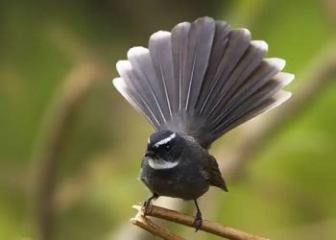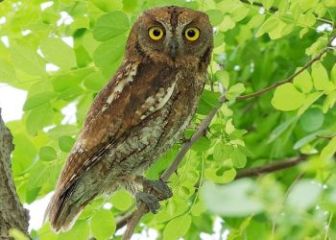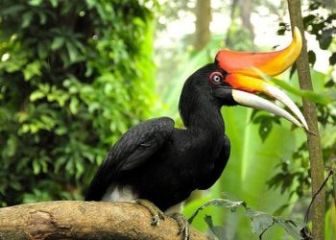The Dwarf Bird - A Small Forest Bird With the Ability to "Cheat"
Blog | by
The dhole (Dicrurus macrocercus) is a familiar forest bird to Vietnamese people. It is small in appearance, fierce in temperament and very intelligent.
The Dwarf Bird (scientific name: Dicrurus macrocercus) is probably a very familiar name to bird lovers, right? They stand out with their unique jet-black plumage with a blue sheen and a characteristic forked tail, appearing throughout all regions of Vietnam. In addition, this bird species also has many interesting behaviors and habits such as the ability to imitate well, being aggressive, brave and even often "cheating".
In today's article, let's take a deep dive into the origin and some common species of swallows in Vietnam to see the richness of this small forest nicebirds.
Origin of the swallow
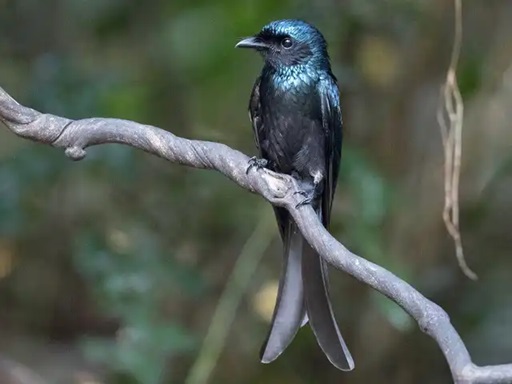
The drongo is a bird native to Asia.
The Black Drongo, whose scientific name is Dicrurus macrocercus, is a native bird of Asia, especially in South Asia and Southeast Asia.
This bird species has a wide distribution range from Pakistan, India, China to countries in the Indochina region such as Vietnam, Laos, Cambodia,...
Common species of swallows in Vietnam
Below are some common species of swallows in Vietnam, please learn more.
Black Dwarf Boat (Fish Tail Boat)
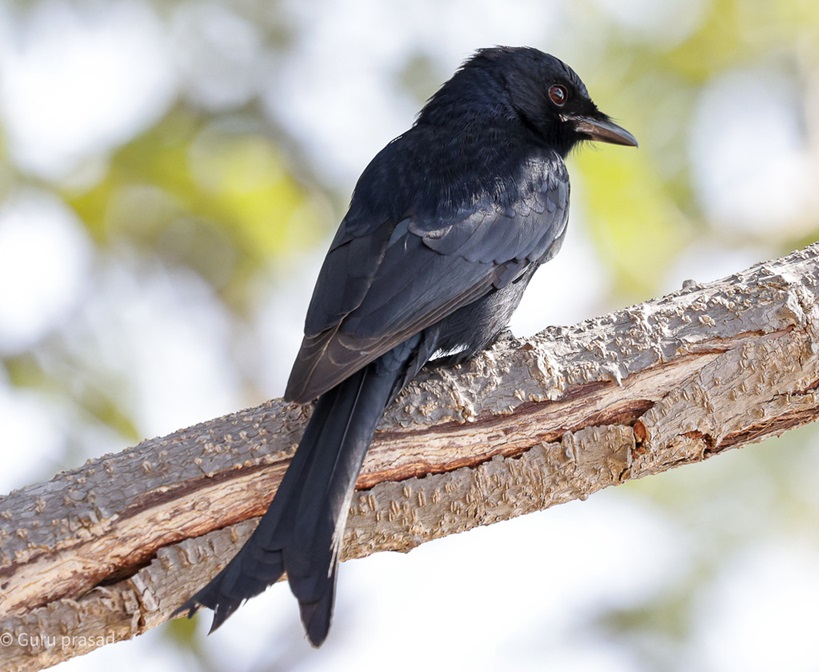
The black drongo has a tail that looks like a fish's tail.
Black dhole or fishtail dhole, scientific name is Dicrurus macrocercus. This is one of the most common dhole species in Vietnam with a wide distribution range throughout the country from the plains to the countryside, forest edges or even sparsely populated areas.
Characteristics of black-crowned crane:
- The fur is jet black with a slight purple-blue tint.
- Deep forked tail like a fish tail
- Length from 28 - 32 cm (including tail)
- Aggressive, brave, highly territorial
Split tail paddle
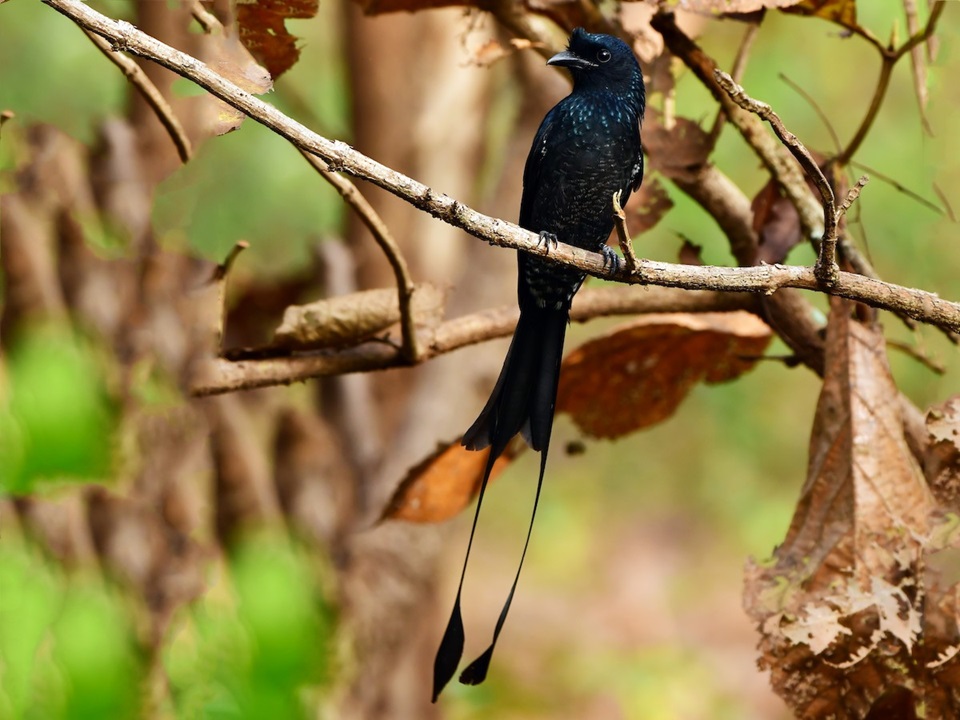
Image of a forked swallow with an impressive forked tail.
The Split-tailed Dracaena, scientifically known as Dicrurus paradiseus, is one of the most beautiful and beloved dracaena species in Vietnam. They are distributed in the Central Highlands, South Central Coast and Southeast regions. In the wild, the Split-tailed Dracaena is less common than the Fish-tailed Dracaena.
Characteristics of split-tail paddle:
- The fur is black with a purple-blue sheen, smooth and shiny in the sunlight.
- The tail is very long with two tail feathers that look like two flags fluttering,
- The head has a crest of feathers that are raised, upright or wavy depending on the species.
- Size from 40 - 47 cm (including tail)
- Intelligent, bold and very aggressive.
Crow-billed drake
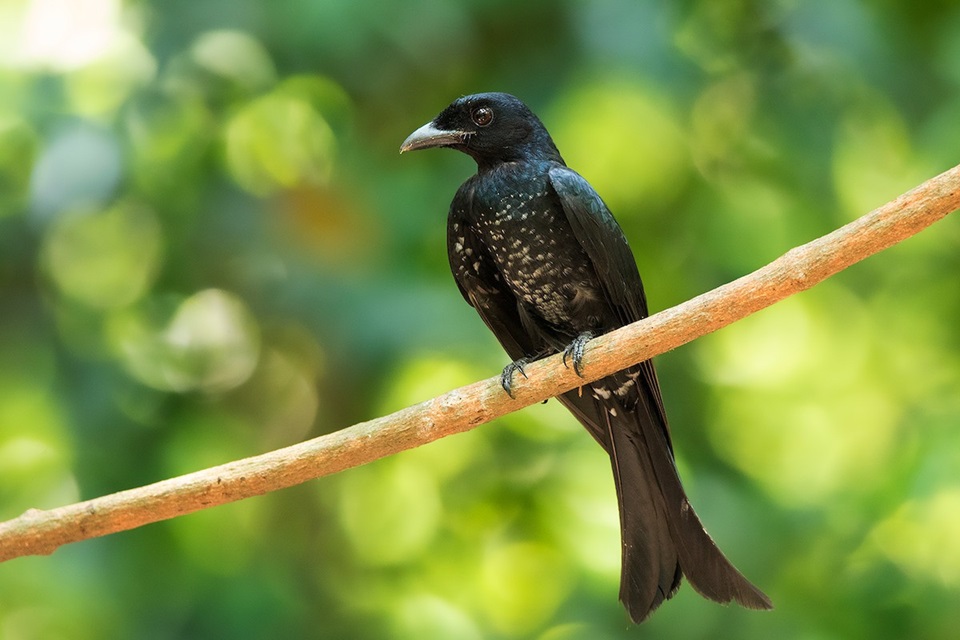
Image of the drake with its characteristic hooked beak.
The crow-billed drongo, scientifically known as Dicrurus annectens, is also one of the most popular drongo species in our country thanks to its unique appearance and clear, beautiful song. This is a migratory bird that breeds in the Northeast, North Central and Central Central regions, and is rarely seen in residential areas.
Characteristics of the crow-billed drake:
- The fur is metallic black, shiny and looks extremely eye-catching.
- The beak is large and slightly curved like a crow's beak - this is also the reason why this bird is called the crow-billed drake.
- The tail is also split in two but not as deep as the tail of the catfish.
- Available in small to medium sizes with lengths ranging from 24 - 28 cm
-
It is a highly alert and very courageous bird.
Grey duck
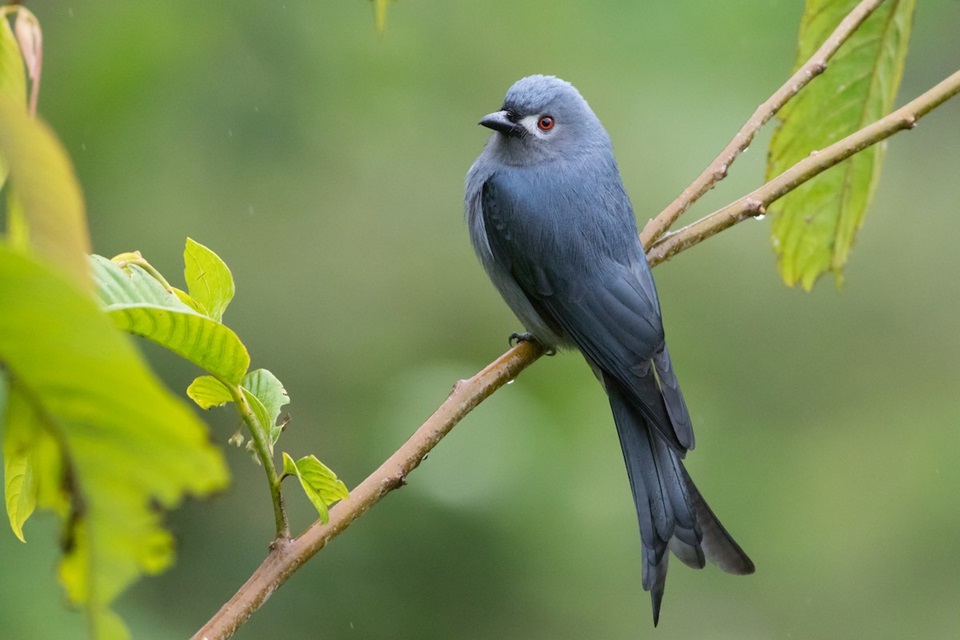
Image of a grey drongo with its distinctive ash grey plumage.
The Ashy Drongo, scientifically known as Dicrurus leucophaeus and in English as the Ashy Drongo, is a unique species of drongo thanks to its distinctive ash-gray plumage. In Vietnam, this bird species is found in many secondary forests in the Northwest, Northeast and Central Highlands, and is rarely found in urban areas.
Characteristics of the grey drongo:
- The fur has a characteristic ash gray color.
- The tail is of medium length, forked in the middle but not as deep as the fish-tailed dromedary (black dromedary).
- Black beak, small, slightly curved, eyes red or dark brown
- Small size with length from 28 - 30 cm (including tail)
- Normal singing but can sing continuously
- Has seasonal migration habits, from high mountains to lower areas in winter.
Flat tail flag rowing
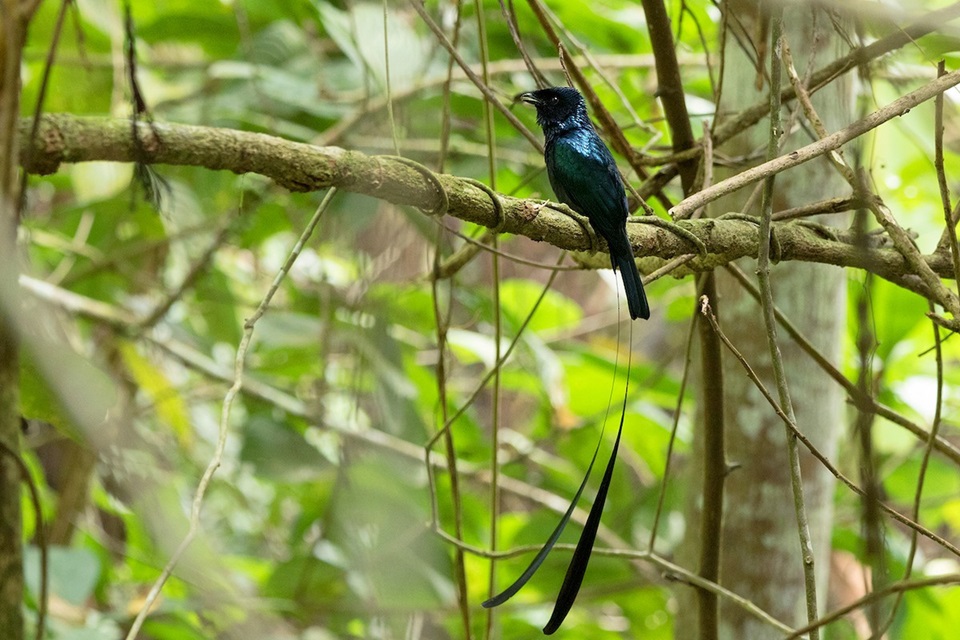
Image of a flat tailed dinghy with a special tail.
The flat-tailed drow has the scientific name (Dicrurus remifer), and is also a very common drow in our country. They have a similar appearance to the forked-tailed drow, differing only in the tail feathers.
Characteristics of the flag-tailed paddle:
- The fur is metallic blue black and very shiny.
- Has a crest of feathers but is shorter than the forked-tailed dhole.
- The tail has two long, separate feathers that look like two soft ribbons.
- It is a resident species of swallow distributed widely throughout the country, especially in high mountains and dense forests.
- Able to imitate the calls of many other birds
- Smaller in size than the split-tailed dromedary.
Rowing the mane
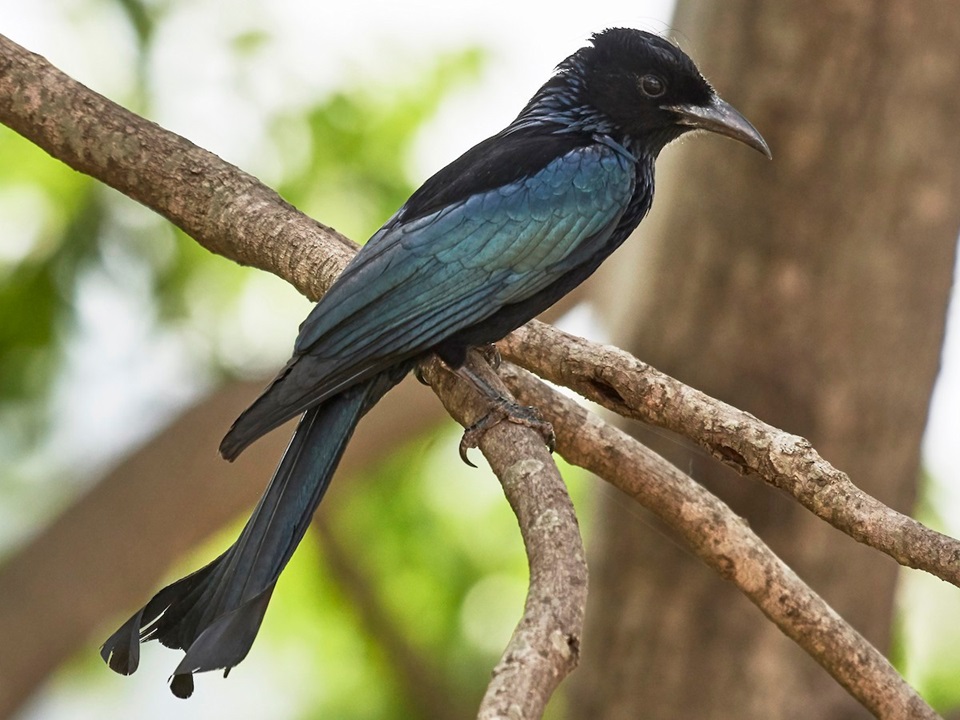
The mane is raised with a crest standing upright on the head.
The scientific name of the Hair-crested Drongo is Dicrurus hottentottus, and the English name is Hair-crested Drongo. This is one of the forest drongo species with an impressive appearance with a "horse's mane" standing upright on the head, with a wide distribution range throughout Southeast Asia, including Vietnam.
Characteristics of the maned drongo:
- Jet black fur, shimmering purple under the light
- The hair stands up around the head, nape and neck like a horse's mane.
- Long tail, slightly forked
- Average size from 29 - 32 cm
- Has a varied vocalization with squeaks, whistles and the ability to mimic the sounds of other birds.
- Very cautious personality, often lives alone.
Habits & Behavior of the Swallowtail
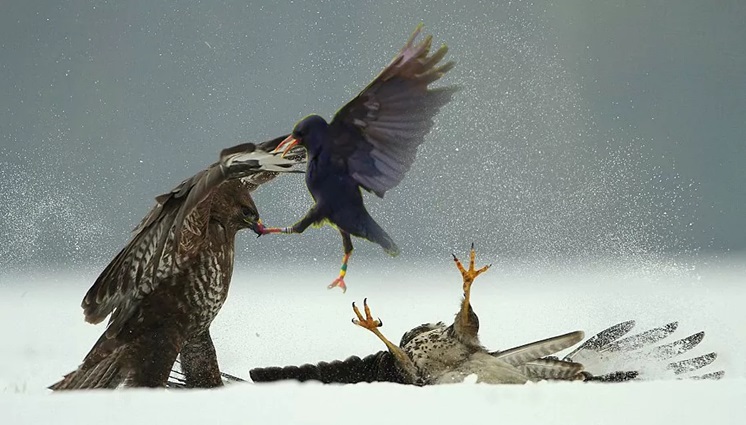
The moment a drongo attacks a large bird of prey.
Let's learn about some of the typical habits and behaviors of the drongo to see what's interesting about this small bird.
Foraging behavior
Dwarf birds often eat flying insects such as grasshoppers, beetles, bees, flies, mosquitoes, butterflies, etc. They have a unique method of hunting in the air by perching on high branches to observe their prey, then rush out to catch it and return to their original position (sallying).
Especially when food is scarce, some species of swallows can eat small ripe fruits, nectar, and even the eggs and young of other birds.
Rich calls and good mimicry
The dhole is probably one of the birds with the most diverse calls, characterized by a resonant, screeching or shrill tone. They are also often able to imitate the calls of many other birds such as magpies, sparrows, and even roosters and frogs.
Some birds even use this mimicry to deceive or misdirect enemies or prey.
Highly territorial and defensive
Most drongos are very aggressive and territorial. They will attack large birds of prey such as hawks, owls, crows, and eagles if they dare to invade their nests.
Especially during the breeding season, male and female birds will take turns guarding and protecting the nest from predators.
Reproductive behavior
Normally, drongos breed from April to July, depending on their habitat. They will use dry branches, roots, and moss to make small cup-shaped nests in bushes or on high tree branches.
Each brood, the swallow lays 2-4 eggs, which are cream-colored, light brown, and have dark spots. Both the male and female birds incubate the eggs, protect, and feed the chicks until they are adults.
Very smart
The drongo is considered one of the most intelligent small forest birds with the ability to imitate calls extremely well, in addition they also remember their territory and nest accurately.
In particular, they are also a "cheating" bird when they dare to fake an alarm sound to scare other birds and make them run away, then they will rush to steal food easily, so smart and interesting, right?
Migratory behavior (in some species)
Some species of dholes, such as the grey dhole, have short-term migration behaviour - often moving from high mountains to lowlands in winter. However, most dhole species in Vietnam live in one area all year round.
Tips to help duckweed sing well
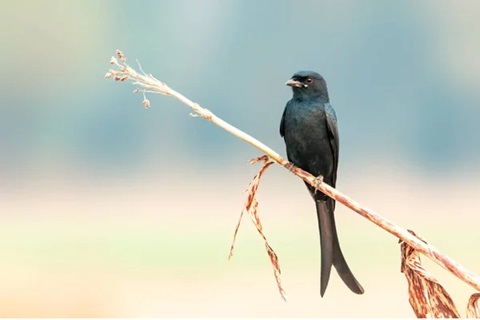
How to stimulate the swallow to sing well.
Many bird owners love the drongo because of its special, clear singing voice. However, to help your bird sing better, please refer to some of the following tips.
Quiet environment
First, if you want your bird to sing well, you need to raise it in a suitable environment that meets the following basic criteria:
- Quiet, airy space
- Hang the cage in a place with natural light, avoid rain, drafts, and strong sunlight.
- Do not hang birds in places with loud, continuous noise because it can easily stress the birds.
Provide a nutritious diet
Providing a nutritious diet will help your drongo grow faster, be healthier and sing better. Therefore, you should choose some of the following foods.
- Insects like crickets, grasshoppers, and superworms help birds become more energetic.
- Sweet ripe fruits like papaya, apple, banana
- Add multivitamins, minerals, crushed boiled eggs and bird pate to help feathers shine and birds become more energetic.
Stimulate birds to sing every day
In addition to providing a suitable diet and environment, you need to stimulate singing for the swallows by letting them listen to sample bird songs or hanging them near decoy birds, specifically as follows:
- Play the sounds of birds singing well, such as magpies, thrushes, and nymphs, every day, so that the birds can remember and imitate them. Play them with a small speaker for 15-20 minutes every day.
- Hang the drongo cage near the cage of decoy birds or birds that are already good singers to stimulate natural competition.
Sunbathe & bathe regularly
Another secret to help the bird sing well is to sunbathe and bathe regularly. Please follow the instructions below:
- Every day, let the bird sunbathe between 7 and 9am to help strengthen the immune system, stimulate reproductive hormones to help the bird sing more and better.
- Give the bird a bath in a clean water tray or mist sprayer 2-3 times a week.
- Clean the cage to keep it clean and dry so the bird feels more comfortable and sings more easily.
Picture of the swallow bird
We invite you to admire the entire collection of images of different species of swallows to see the diversity of colors and shapes of this small, intelligent forest bird.
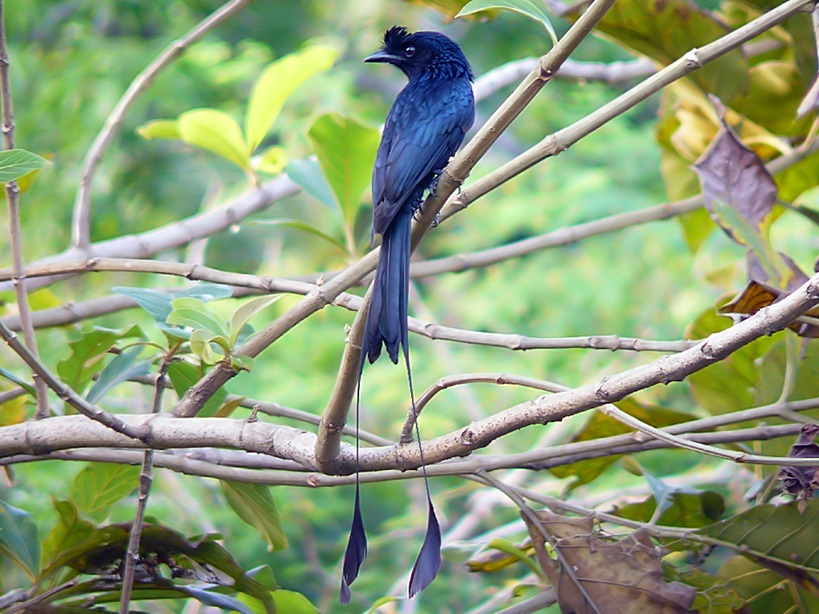
A penguin is perched on a tree branch.
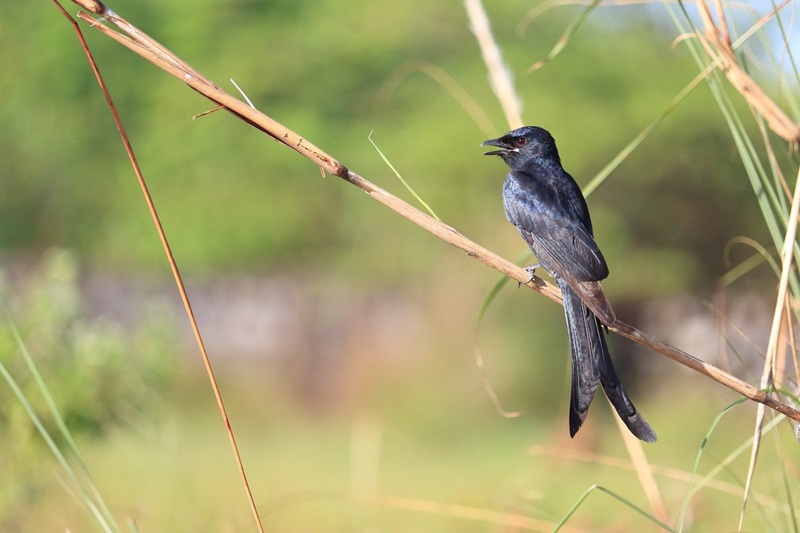
Image of a black drongo with jet black feathers.
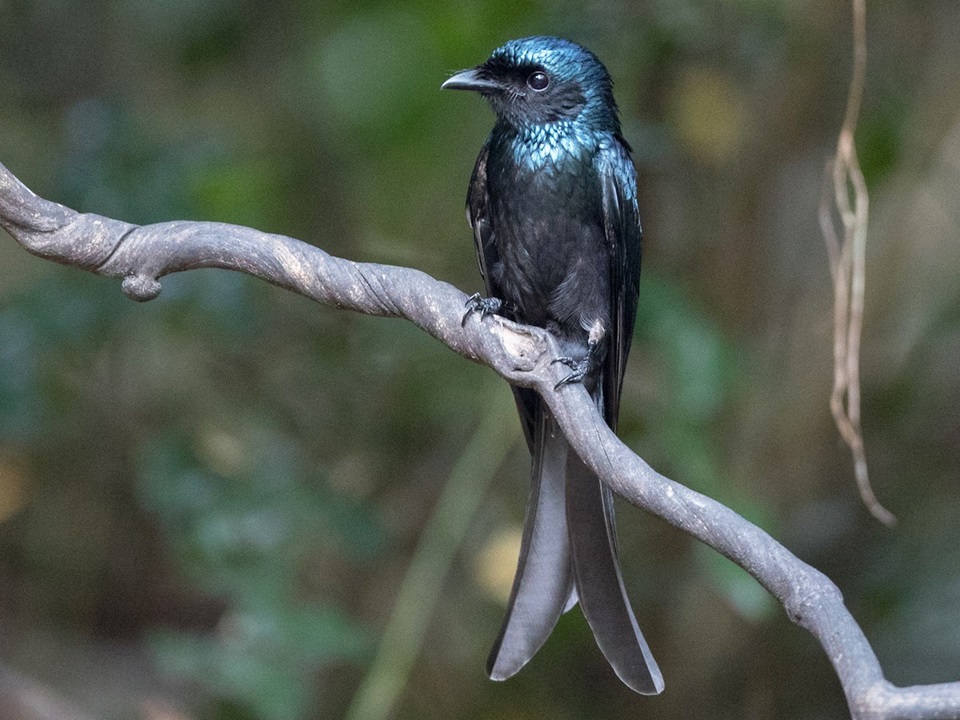
Small sized forest paddle.
'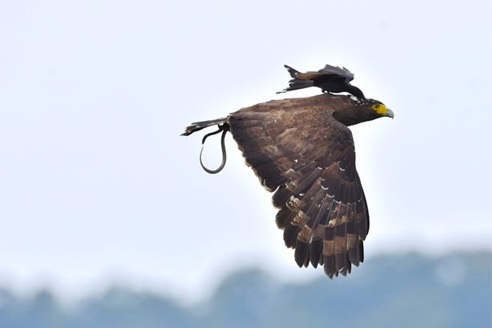
A drongo "dared" to ride on the back of an eagle.
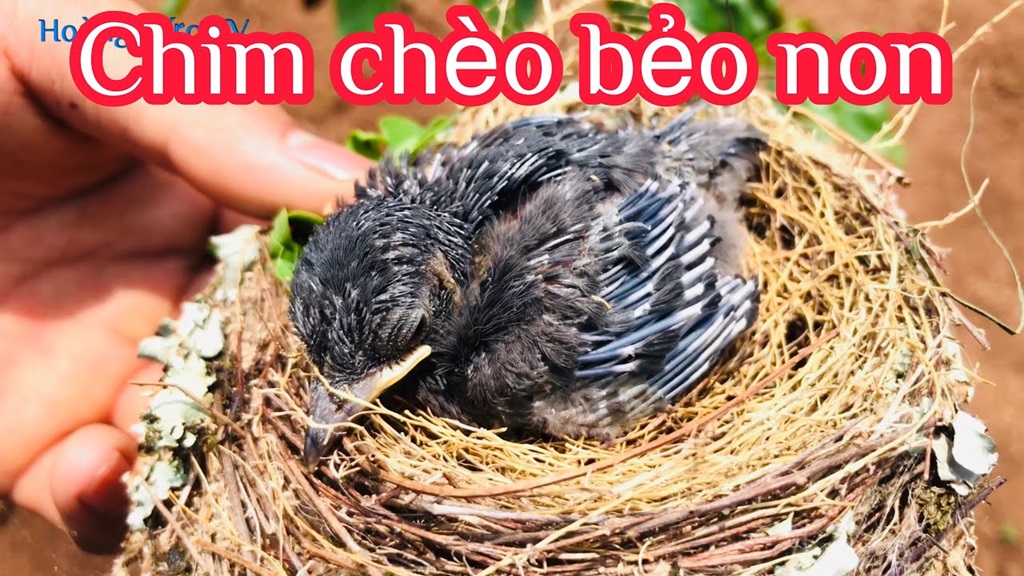
A baby swallow is lying in its tiny nest.
Although small in appearance but very strong in character and outstanding intelligence, the dhole is not only an interesting forest bird but also a perfect choice for those who love ornamental birds. Hopefully, through the information that nicebirds.net shares in the above article, it will help you understand more about this bird and know how to stimulate the bird to sing better and more enthusiastically.
Goodbye and see you soon in the next articles of the Blog section to discover more beautiful - unique - strange bird species.
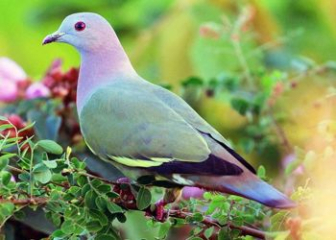
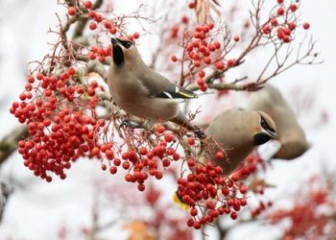
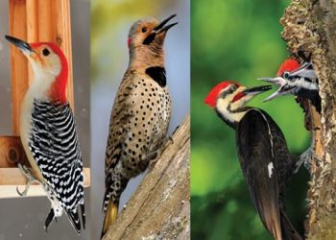

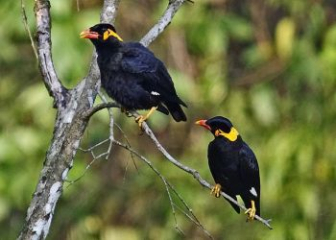
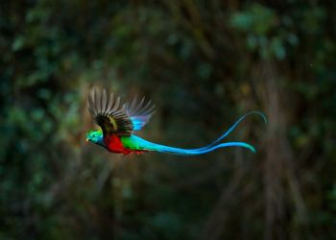

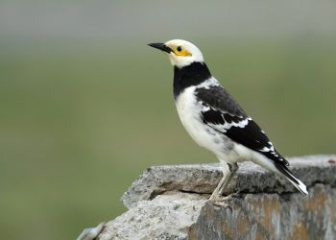
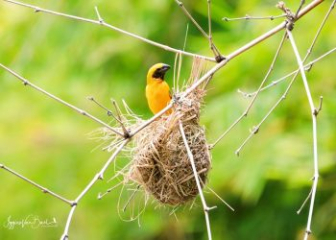
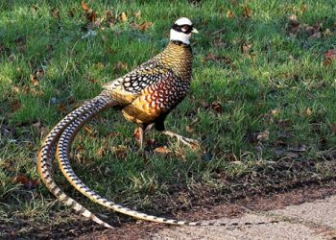
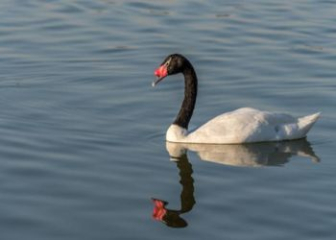
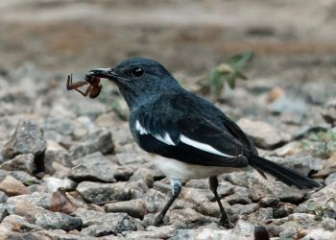
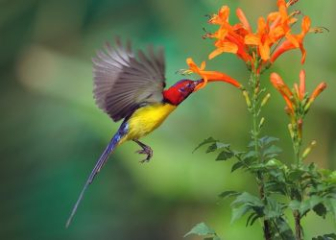
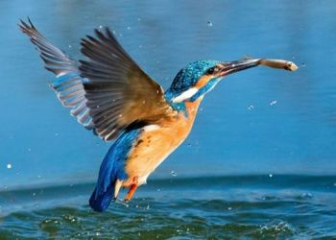
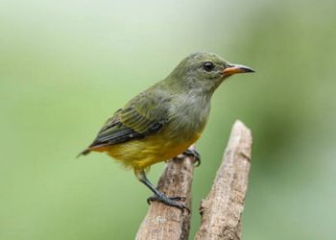
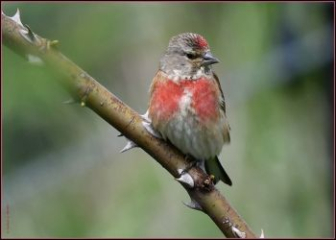
_350x250.jpg)
